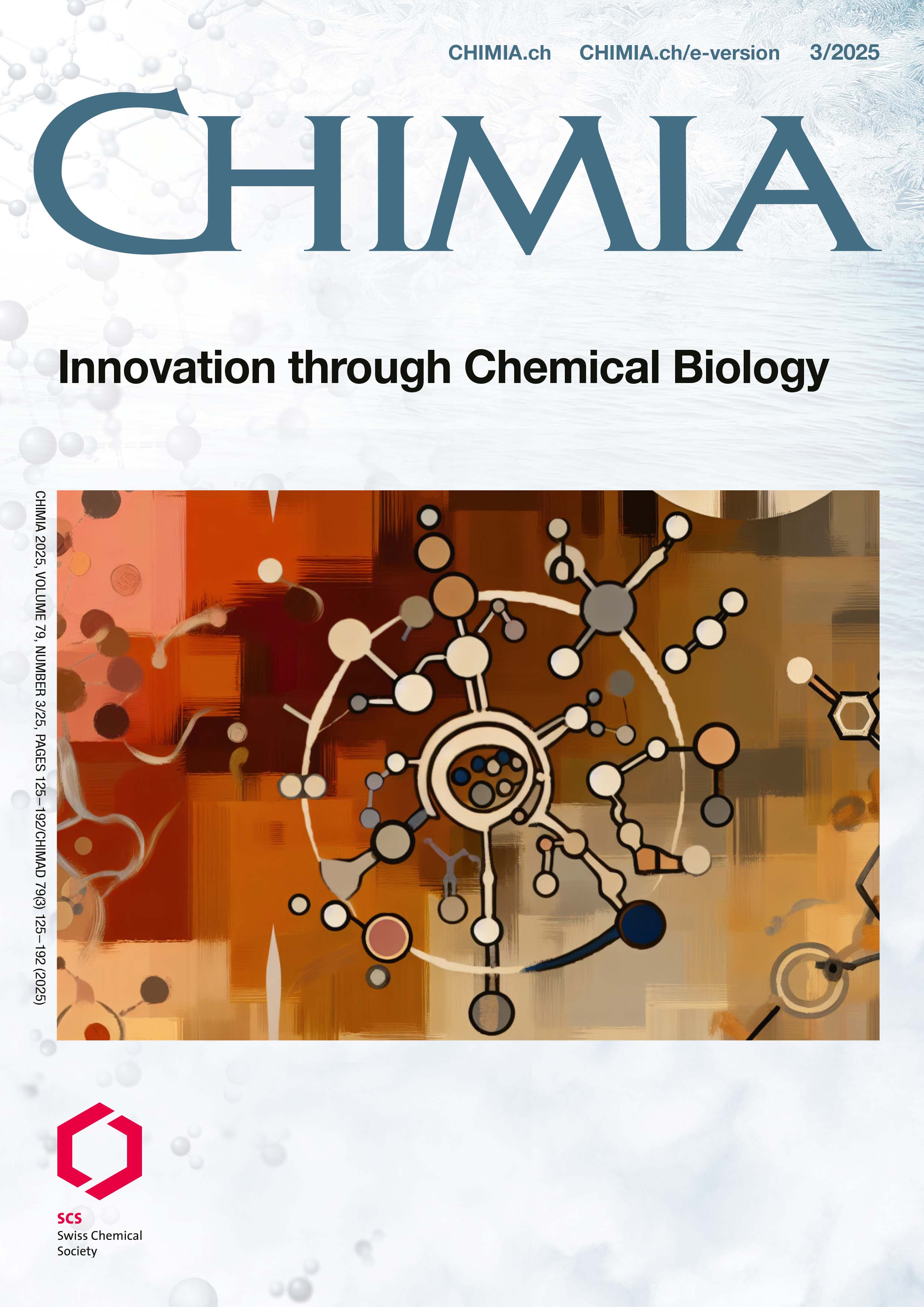Reversible Covalent Reactions of Aldehydes and Salicylaldehydes Using a Lysine-Model Substrate
DOI:
https://doi.org/10.2533/chimia.2025.152PMID:
40156559Keywords:
Aldehydes, Covalent drugs, Lysine targeting, SalicylaldehydesAbstract
Covalent modification of lysine residues has gained significant attention due to its potential application in drug development and chemical biology. Lysine is an essential amino acid, abundant in proteins, and plays a critical role in many biological processes. In this study, we investigated aldehydes for imine-based chemistries and their reactivity profiles using a lysine-surrogate. By monitoring reactions of various aldehydes and salicylaldehydes over time, we determined dissociation constants (KD) for each warhead, reflecting the binding affinity towards the surrogate substrate. Strikingly, our data revealed remarkable differences in affinity depending on the substitution of the warheads. Additionally, we analyzed the kinetic profile of selected aldehydes and salicylaldehydes, which revealed significant disparity in their reaction kinetics. Aldehydes reacted quickly, reaching equilibrium rapidly, whereas salicylaldehydes exhibited considerably slower reaction times, in some cases requiring several hours to reach equilibrium. These differences emphasize how the nature of the warhead structure influences the kinetics of covalent binding to lysine residues. Overall, our study provides valuable insights into the application of reversible covalency to target lysines with reactive warheads that can further inspire development of innovative chemical modifications for drug discovery and chemical biology.
Downloads
Additional Files
Published
Issue
Section
License
Copyright (c) 2025 Cécile Delmas, Emine Sager, Chrystele Henry, Ulrich Hassiepen, Philip R. Skaanderup, Isabel Kerschgens

This work is licensed under a Creative Commons Attribution 4.0 International License.







